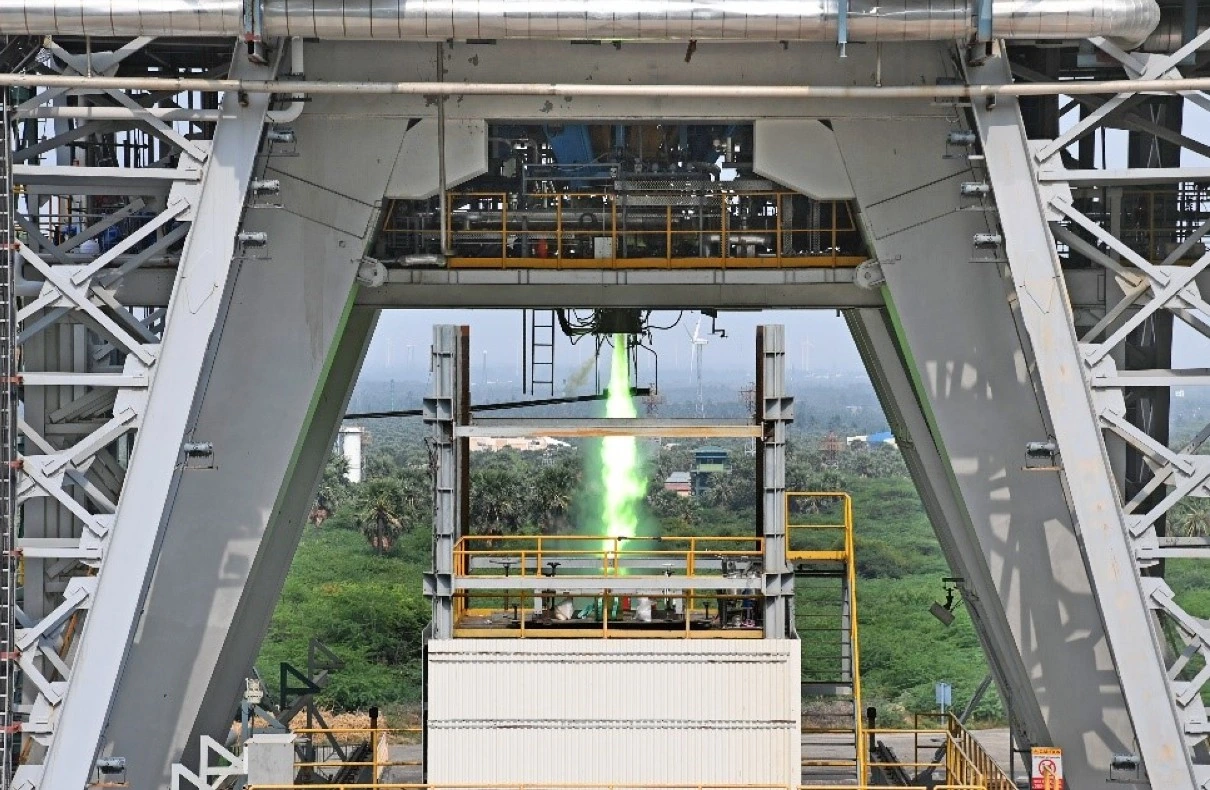The Indian Space Research Organisation (ISRO) has announced significant progress in developing a ‘semi-cryogenic engine’ or ‘liquid oxygen / kerosene (kerosene) engine’ with high ‘thrust’ of 2,000 kN (kilonewtons). This engine will help in the ‘semicryogenic booster’ stage of the launch vehicle ‘Mark-3’ (LVM3).
The first major breakthrough in the programme to develop a semicryogenic engine was achieved on March 28 when the first hot test of Engine Power Head Test Article (PHTA) was successful at ISRO Propulsion Complex, Mahendragiri in Tamil Nadu.
The space agency highlighted that Friday’s test demonstrated smooth ‘ignition’ and ‘boost strap mode’ operation of the engine for a test period of 2.5 seconds. The test was aimed at certifying the integrated performance of critical sub-systems like ‘pre-burner’, ‘turbo pump’, ‘start system’ and control components by ‘hot-firing’ in a short span of 2.5 seconds, it said.
“The test was as predicted and all engine parameters were as expected,” the statement said. With this success, ISRO is planning to conduct a series of tests on the PHTA before building the fully integrated engine to further validate and refine its performance. ”
ISRO’s Liquid Propulsion Systems Centre (LPSC) is developing the semi-cryogenic propulsion ‘engine’ and ‘stage’. The stage (SC120) powered by a 2,000 kN semi-cryogenic engine (SE2000) will replace the current ‘core liquid stage’ (L110) of the LMV3 for payload augmentation and will power the booster stages of future launch vehicles. Semi-cryogenic propulsion uses non-toxic and non-hazardous propellants (liquid oxygen and kerosene) and performs better than the existing L110 stage.

